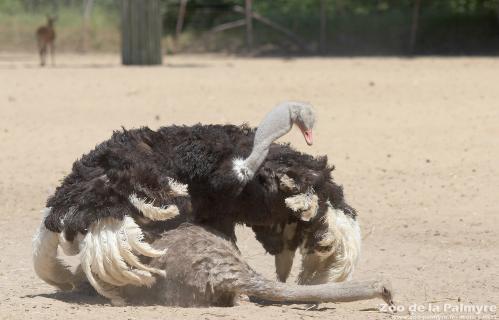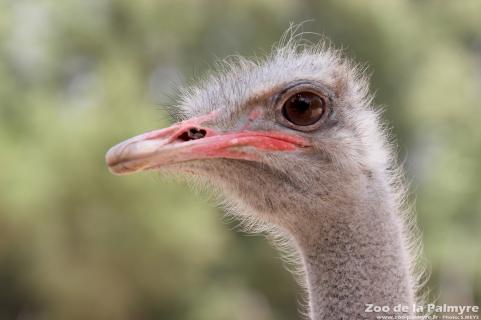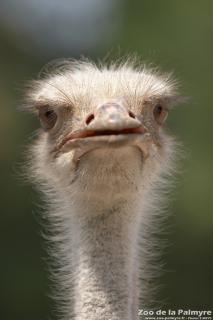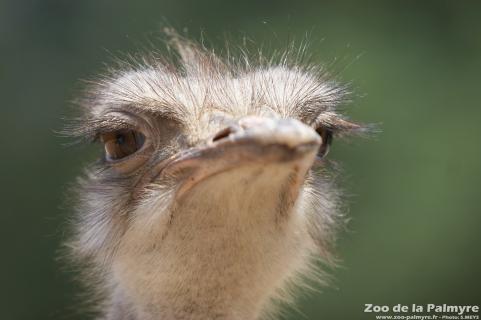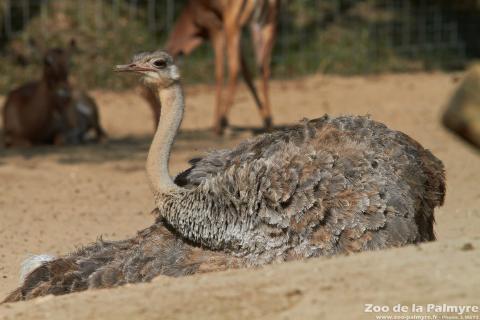Ostrich

Ostrich

-
Class
Aves -
Order
Struthioniformes -
Familly
Struthionidae
-
 jusqu’à 2,50 m
jusqu’à 2,50 m -
 90 à 150 kg
90 à 150 kg -
 42–46 days
42–46 days -
 6–10
6–10 -
 up to 40 years
up to 40 years
-
Diet
mainly vegetarian, occasionally insects and small vertebrates -
Habitat
drylands, savannah, semi-deserts, deserts -
Range
Africa -
Population in the wild
En diminution -
IUCN REDLIST status

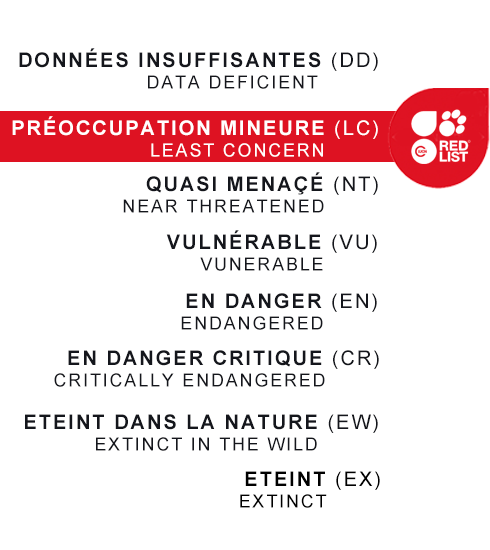
Ostriches are the biggest and heaviest of all birds. Their inability to fly is compensated for by their speed – they can run at up to 50 km/h, with peaks of 70 km/h.
Ostriches have huge eyes (5cm in diameter) protected by long black lashes. Males have black feathers and a white tail. Females, which are smaller, are grey-brown in colour, and young ostriches are cream with black lines and spots.
Ostrich ‘nests’ are dug in the ground by the males; females come to lay their eggs in these hollows. Breeding seasons and strategies vary by place. Where food is scarce, ostriches tend to be monogamous; where it is abundant, groups with one territorial male, a dominant female and several other ‘secondary’ females may form.
Ostrich eggs are the largest in the world, weighing 1.5kg and with a shell more than 2mm thick. The male and the dominant female take it in turn to incubate them. Chicks hatch after about 40 days’ incubation and are able to follow their parents after just a few days.

